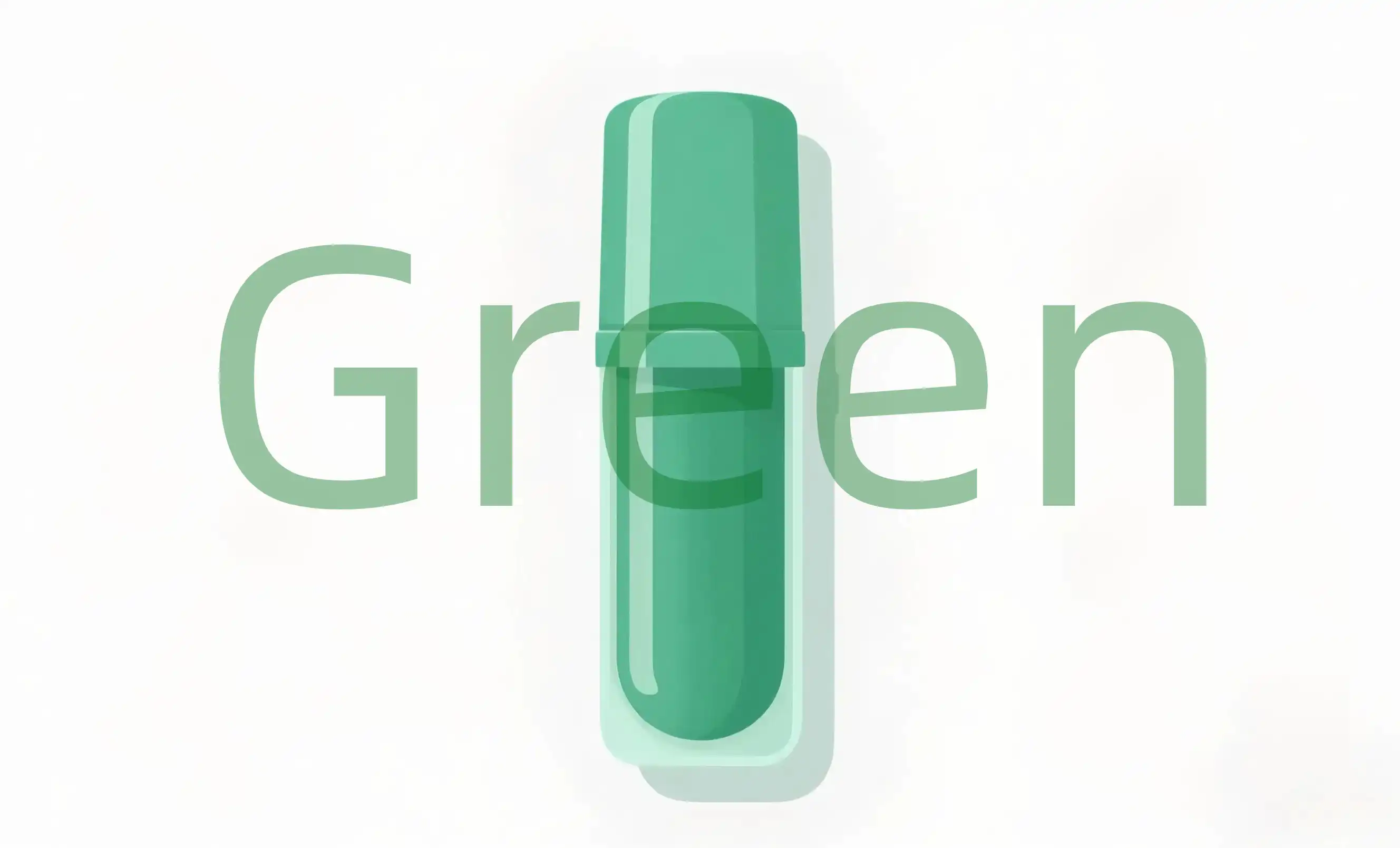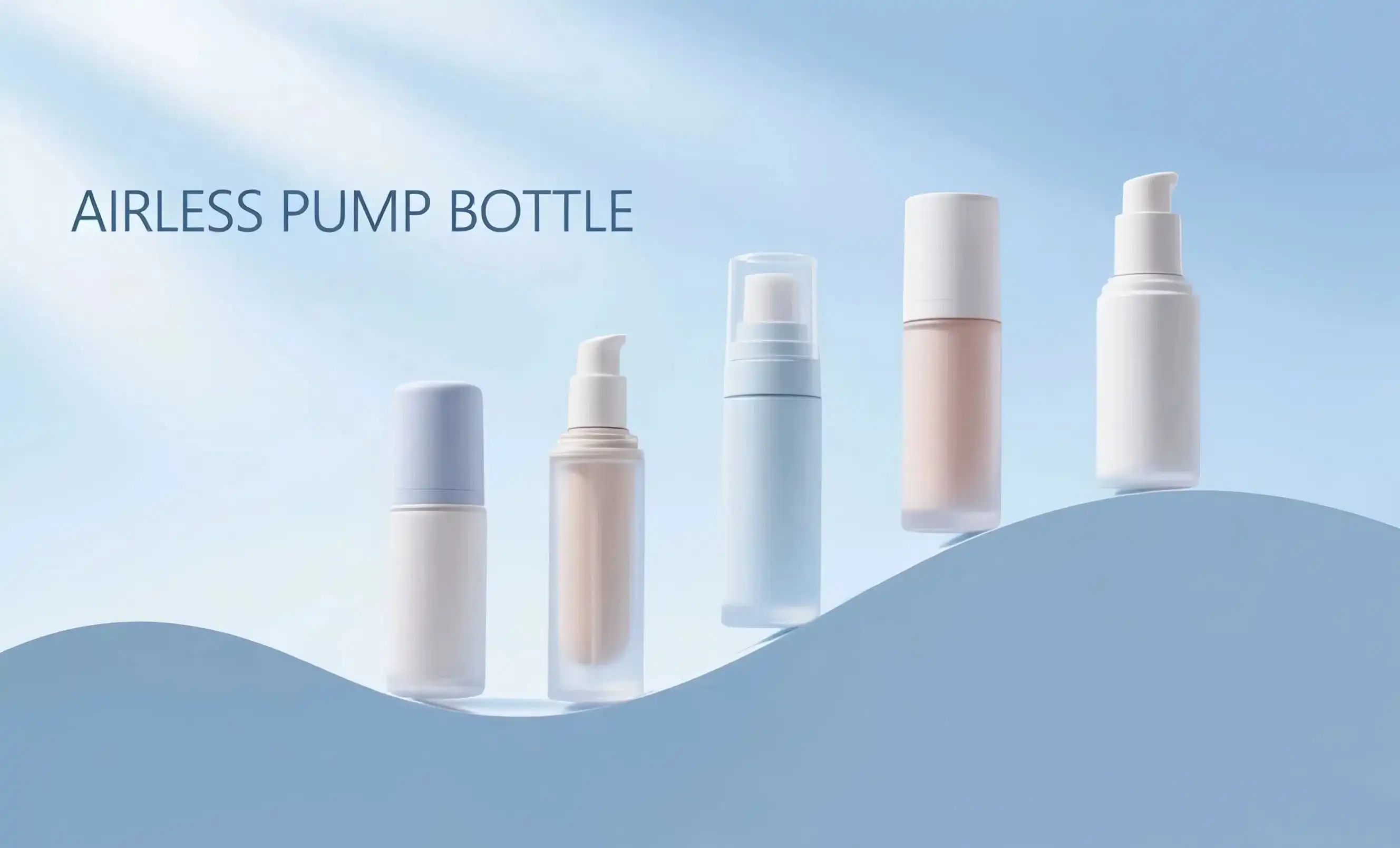Key materials in non-toxic, sustainable airless bottles
The foundation of any eco-friendly airless bottle lies in its material composition. Manufacturers are increasingly turning to innovative, sustainable materials that offer both environmental benefits and product protection.

Recyclable plastics and bioplastics
Many eco-friendly airless bottles are crafted from easily recyclable plastics such as PET (Polyethylene Terephthalate) or HDPE (High-Density Polyethylene). These materials can be processed in most recycling facilities, reducing landfill waste. Bioplastics, derived from renewable resources like corn starch or sugarcane, are also gaining popularity. These materials can biodegrade under specific conditions, offering an end-of-life solution that traditional plastics cannot match.
Glass components
Glass, being infinitely recyclable without loss of quality, is another excellent choice for sustainable airless packaging. While not as common due to weight and fragility concerns, glass components in airless bottles can add a luxurious feel while maintaining eco-credentials.
Post-consumer recycled (PCR) content
Incorporating PCR content into airless bottles is a crucial step towards circular economy principles. By using materials that have already been through the consumer cycle, manufacturers reduce the demand for virgin plastics and decrease overall environmental impact.
Are eco airless bottles free from microplastics and BPAs?
The safety of eco-friendly airless bottles extends beyond their environmental impact to the health of consumers using the products they contain.
Microplastic-free formulations
Truly eco-friendly airless bottles are designed to be free from microplastics. These tiny plastic particles can leach into products and eventually find their way into water systems and the food chain. By using alternative materials or specially formulated plastics, manufacturers ensure that their airless bottles do not contribute to microplastic pollution.
BPA and phthalate-free materials
Bisphenol A (BPA) and phthalates are chemicals commonly found in plastics that have been linked to various health concerns. Eco-friendly airless bottles are typically made without these compounds, using safer alternatives that do not pose risks to human health or the environment.
Rigorous testing and certification
To ensure the absence of harmful substances, reputable manufacturers subject their eco-friendly airless bottles to rigorous testing. Look for certifications from recognized bodies that attest to the safety and eco-friendliness of the packaging materials used.
How to identify truly green airless packaging (checklist)
With the increasing demand for sustainable packaging, it's crucial to distinguish genuinely eco-friendly airless bottles from those that merely claim to be green. Here's a checklist to help identify truly sustainable options:
Material composition and sourcing
- Check if the bottle is made from recyclable or biodegradable materials
- Look for information on the percentage of post-consumer recycled content used
- Verify if the materials are sourced responsibly and sustainably
Manufacturing process
- Investigate the energy efficiency of the production methods
- Check for water conservation practices in manufacturing
- Look for certifications related to sustainable production processes
End-of-life considerations
- Ensure the bottle is easily recyclable in standard facilities
- Check if the manufacturer offers a take-back or refill program
- Verify if all components of the bottle, including the pump, are recyclable or biodegradable
Functionality and product preservation
- Confirm that the airless system effectively protects the product, reducing waste
- Check if the bottle design allows for maximum product dispensing
- Verify that the packaging extends product shelf life without additional preservatives
Transparency and certifications
- Look for clear labeling of materials and recycling instructions
- Check for third-party certifications such as Cradle to Cradle, EcoCert, or similar
- Verify if the manufacturer provides a detailed environmental impact statement
By using this checklist, brands and consumers can make informed decisions about the sustainability of airless packaging options. It's important to remember that truly eco-friendly solutions consider the entire lifecycle of the product, from raw material sourcing to end-of-life disposal or recycling.
The journey towards more sustainable packaging is ongoing, with innovations constantly emerging. As the beauty and personal care industry continues to prioritize environmental responsibility, we can expect to see further advancements in eco-friendly airless bottle technology. These improvements will likely focus on increasing the use of renewable resources, enhancing recyclability, and reducing the overall carbon footprint of packaging production and distribution.
For brands looking to make a positive environmental impact while ensuring product quality and safety, eco-friendly airless bottles offer a compelling solution. By choosing packaging that aligns with sustainability goals, companies not only contribute to environmental conservation but also meet the growing consumer demand for greener products.
Are you a skincare brand, makeup company, or cosmetics manufacturer seeking sustainable packaging solutions? Topfeelpack offers advanced eco-friendly airless bottles designed to meet your specific needs. Our commitment to sustainability, combined with fast customization, competitive pricing, and quick delivery, makes us the ideal partner for your packaging needs. Experience the perfect blend of eco-consciousness and product protection with our innovative airless bottles. Contact us today at pack@topfeelgroup.com to learn more about how we can help elevate your brand with sustainable packaging solutions.
References
- Green, J. (2022). Sustainable Packaging in the Beauty Industry: Trends and Innovations. Journal of Cosmetic Science, 73(4), 215-230.
- Smith, A. & Johnson, B. (2021). Eco-friendly Airless Packaging: A Comprehensive Review. Packaging Technology and Science, 34(2), 78-95.
- Environmental Protection Agency. (2023). Guidelines for Sustainable Packaging in Personal Care Products. EPA Publications.
- Brown, C. (2022). The Role of Bioplastics in Reducing Packaging Waste. Sustainable Materials and Technologies, 28, e00295.
- Lee, S. & Park, H. (2023). Consumer Perceptions of Eco-friendly Packaging in the Cosmetics Industry. Journal of Cleaner Production, 350, 131456.
- World Packaging Organisation. (2022). Sustainability in Packaging: Global Trends and Future Outlook. WPO Annual Report.

 - 副本_1745399213966.webp)

_1747827716538.webp)

